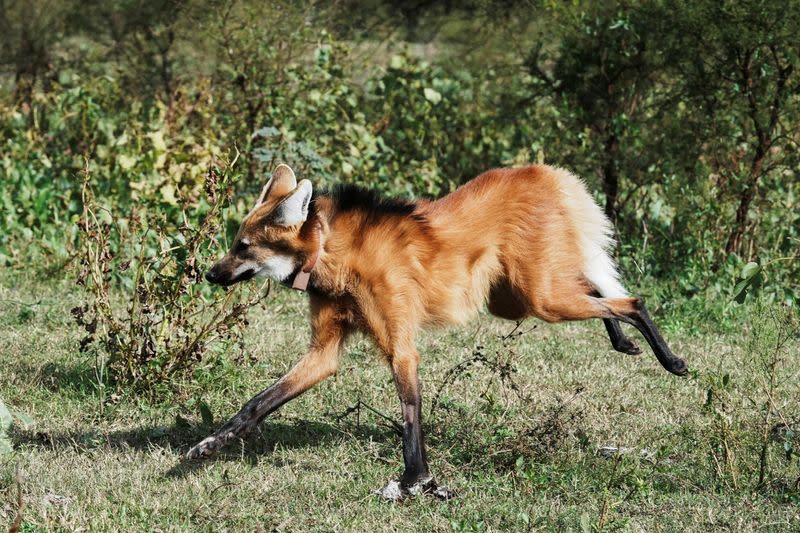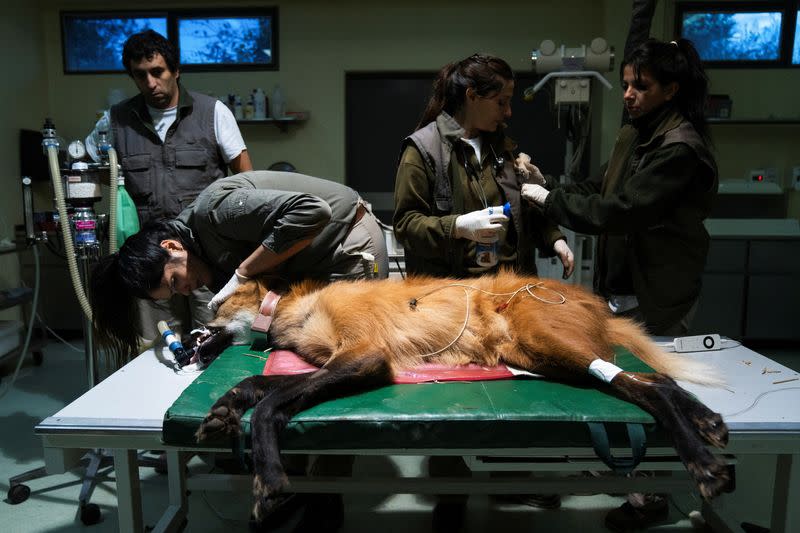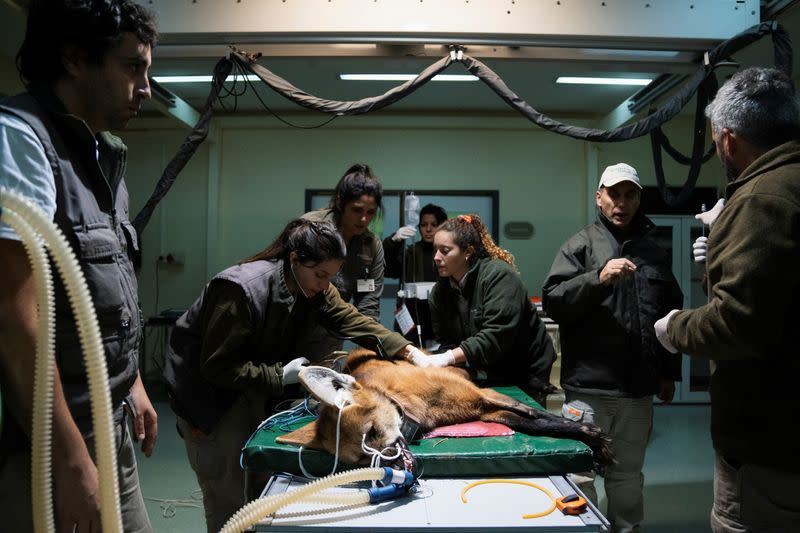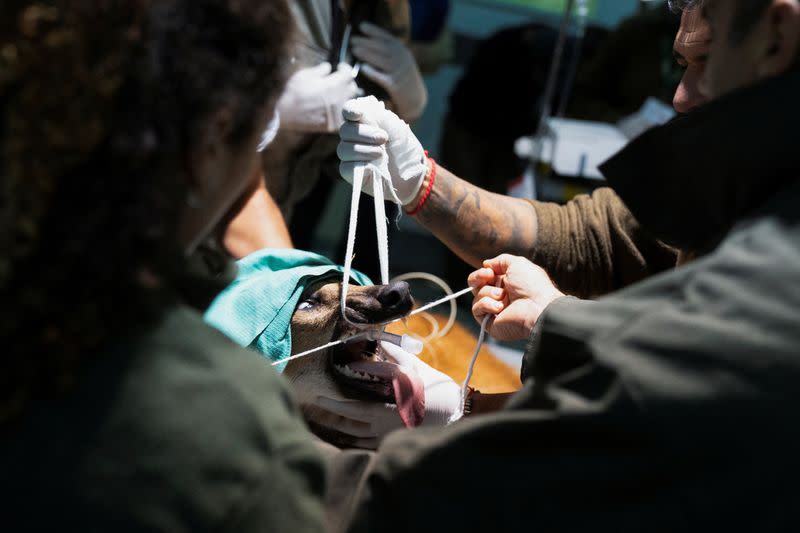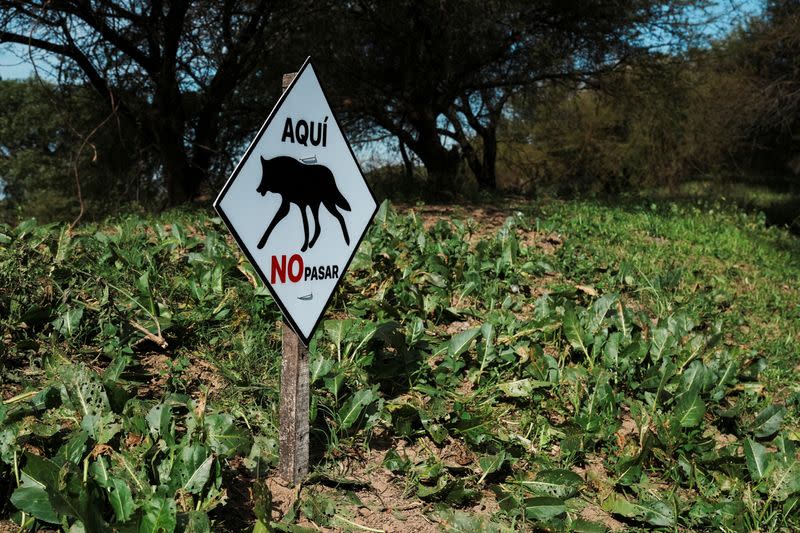A fox on stilts? Argentine long-legged maned wolf returned to the wild
By Lucila Sigal
BUENOS AIRES (Reuters) - Argentine conservationists have returned a rare and unusual-looking animal, a maned wolf, to the wild around Buenos Aires, with its long black legs and red-fur making the creature look like a fox on stilts or perhaps wearing knee-high boots.
The endangered species, whose natural habitat is usually in the hot northeast of the country, has slowly migrated south, which experts said was linked to land clearances for farming, hunting, global warming and more extreme weather.
"This (migration) is a phenomenon that is occurring with many species of large vertebrates," said Marcela Orozco, a doctor in biological sciences at the University of Buenos Aires (UBA) and researcher at the national science institute CONICET.
"It is closely associated with climate change, deforestation, environmental degradation and the indiscriminate use of natural resources, which causes species to begin to modify their geographical distribution."
The Temaikén Foundation, a non-profit organization dedicated to the conservation of wild species, received the male maned wolf in December after it was found wandering lost in Olavarría, a town in the province of Buenos Aires.
After carrying out health checks and tests using camera traps to ensure it could survive back in the wild, the maned wolf was released on Thursday in the Paraná River delta area, where others of the species have previously been sighted.
To keeping monitoring it after its release, experts from Temaikén placed a satellite collar on it and installed more camera traps in the area.
"It is an animal that we want to be reinserted fully into the wild," said Guillermo Delfino, head of the threatened species program at the Temaikén Foundation.
"We use different devices such as camera traps, where we can see and record absolutely all the behaviors it has during the day and at night."
Despite an appearance that could look threatening, the maned wolf is an elusive animal with a varied diet that ranges from rodents, amphibians and birds to eggs and plants.
(Reporting by Lucila Sigal; Editing by Adam Jourdan and Sandra Maler)
